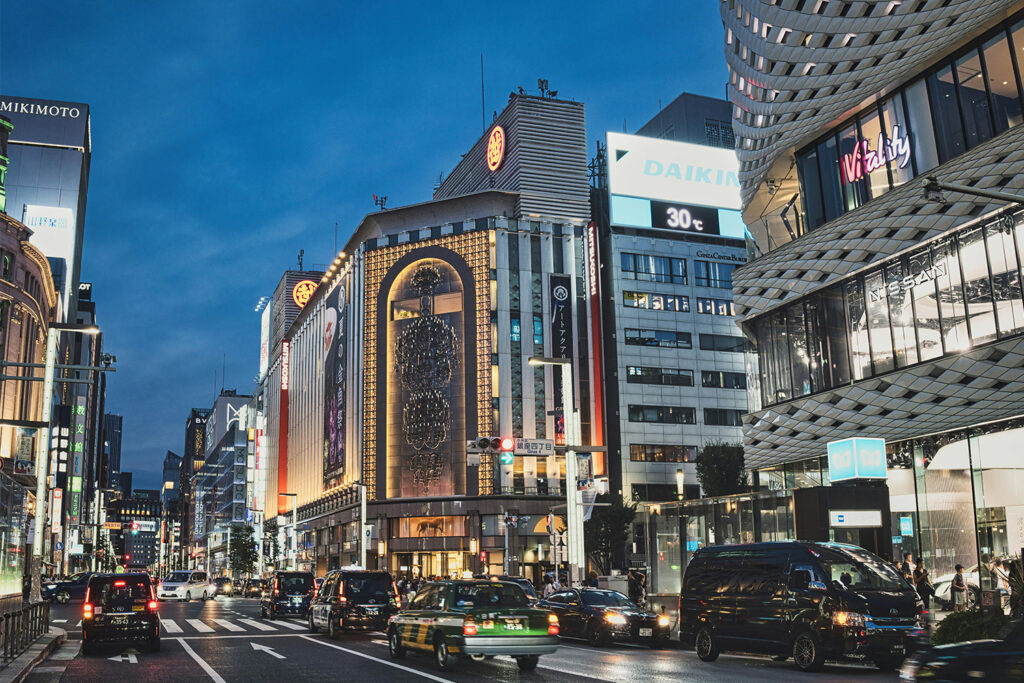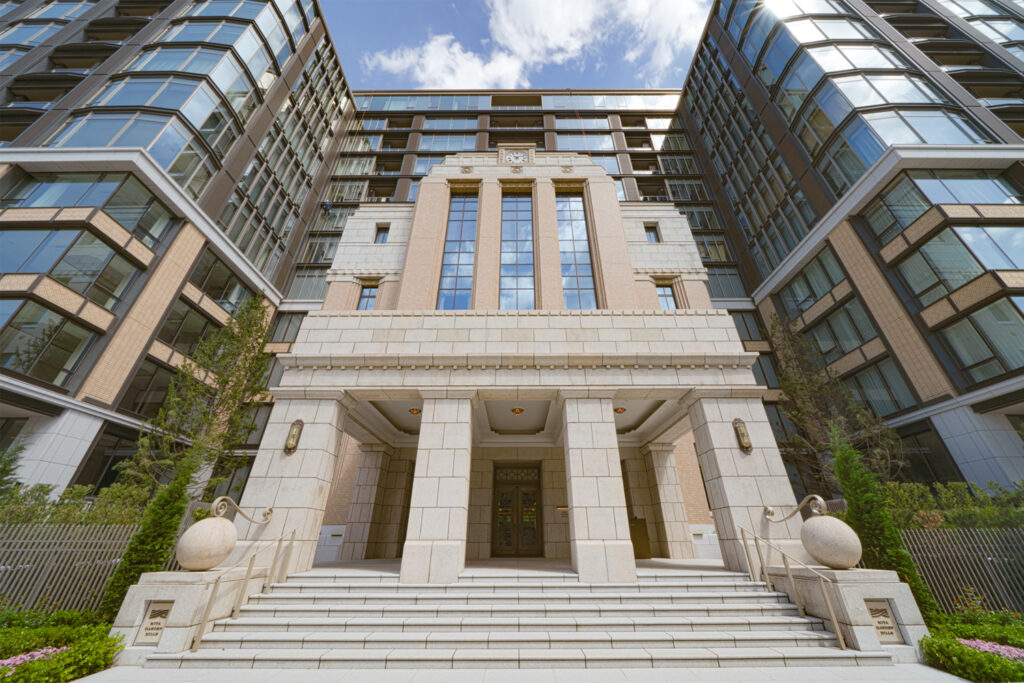
In Japan, the concept of impermanence is deeply rooted in the nation’s culture, as evidenced by the unique approach to housing. Unlike many other countries where homes are built to last for generations, some houses in Japan are constructed to stand for a mere 30 years before being demolished and rebuilt. This practice is not only a reflection of cultural beliefs but also a pragmatic response to the ever-present threat of natural disasters.
One of the most striking examples of this transient mindset is the Ise Jingu, the most sacred shrine in the Shinto religion, which is Japan’s native belief system. Every 20 years, the shrine is meticulously dismantled and reconstructed using the same traditional techniques and materials, symbolizing the cyclical nature of life and the acceptance of change.
Japan’s short housing life spans can also be attributed to the country’s geological instability. Situated along the Pacific Ring of Fire, Japan is constantly at risk of earthquakes and tsunamis. In response to this persistent threat, the nation has adopted a housing culture that prioritizes quick and inexpensive construction, primarily using wood. While this approach may not entirely mitigate the risks posed by natural disasters, it allows for more rapid rebuilding and recovery in the aftermath of such events.
Japan’s stable land prices are working in investors’ favour
Japan’s steady land prices are proving advantageous for investors, as the primary value of real estate lies in the land itself. Over the past few decades, land prices in Japan have remained remarkably stable, providing a solid foundation for investment. In contrast, the buildings erected on these lands gradually depreciate over time, eventually reaching a point where the seller is essentially only paying for the value of the land.
This unique dynamic in the Japanese real estate market has significant implications for both buyers and sellers. For investors, the stability of land prices offers a sense of security and predictability, as the underlying asset maintains its worth even as the structures upon it lose value. This characteristic of the market allows for more accurate long-term financial planning and risk assessment.

On the other hand, sellers must come to terms with the fact that the buildings they have constructed and maintained will eventually diminish in value, leaving only the land as the true source of worth. This realization may encourage property owners to prioritize land acquisition and development over the construction of elaborate or expensive structures, as the latter will inevitably depreciate over time.
The stability of land prices in Japan, coupled with the depreciating nature of buildings, has created a distinctive real estate landscape that rewards strategic investment and a keen understanding of the market’s long-term dynamics. As investors continue to navigate this environment, they may find that focusing on the intrinsic value of the land itself, rather than the short-term appeal of the structures above it, is the key to success in Japan’s real estate market.

The most sought-after land in Japan is in central Tokyo, within the Yamanote Line loop. In real estate, location is everything, and this holds especially true here. While Japan’s economy has gone through ups and downs, central Tokyo has remained a key destination for investment.
Despite economic shifts, land values in this area have stayed strong, reflecting the city’s role as Japan’s financial and cultural center. Low interest rates, urban redevelopment, and strong investor confidence—especially from overseas buyers benefiting from the weaker yen—have kept demand high. Although rising construction costs and demographic changes pose challenges, Tokyo’s ongoing transformation, with major infrastructure projects and mixed-use developments, continues to drive real estate growth. As the city evolves, its central districts remain a top choice for investors seeking long-term value in Japan’s ever-changing property market.
Time for a change: Longer-lasting structures and modern renovations

As Japan confronts the challenges of a new era, the nation’s long-standing approach to housing is undergoing a significant shift.
The demand for new condos and apartments has outpaced the supply, forcing younger generations to seek alternative solutions. Faced with financial constraints and a desire for more modern living spaces, many young Japanese are turning to the renovation of old homes as a cost-effective and practical option.
Traditionally, Japanese homes were designed with a highly compartmentalized layout, featuring numerous small rooms that no longer align with the preferences and lifestyles of contemporary buyers. Recognizing this change in demand, a growing number of construction companies are now offering renovation services to transform these outdated structures into modern, functional living spaces.

One notable example of this trend is the successful renovation of a condo in Akasaka by Housing Japan. The company skillfully remodeled the old, segmented layout into a luxurious and spacious residence that caters to the needs and aspirations of today’s Japanese homebuyers. This project showcases the potential for breathing new life into aging properties, extending their lifespan and adapting them to the evolving requirements of modern living.
As more young Japanese embrace the concept of home renovation, the country’s housing landscape is gradually shifting away from the traditional cycle of demolition and reconstruction. By revitalizing existing structures, Japan is not only addressing the immediate housing demand but also fostering a more sustainable and financially accessible approach to homeownership in the face of changing economic and social realities.

Also, construction quality, specifically seismic performance of buildings in Japan has significantly improved. Until a few decades ago, the Japanese way was to surrender to tsunamis and other natural disasters by using cheap building materials. Nowadays, modern engineering and SRC (steel-reinforced concrete) has made earthquake-proof high risers possible and extended the quality and lifetime of buildings.
What the Government say and how it compares to around the world
These Japanese Government give averages to the longevity of property value, this is mainly used for tax purposes and is provided by the Ministry of Finance but can still give a great insight into the average life span of Residential buildings across Japan.
| Construction | Years |
| Steel-reinforced concrete or reinforced concrete | 47 |
| Brick, stone or block construction | 38 |
| Steel frame construction (other than light steel frame construction) | 34 |
| Same as above (lightweight steel frame construction) | 24 |
| Wooden or wooden frame mortar construction | 21 |
This is an average taken from across the entirety of Japan. As new buildings are built to even more effective construction codes they are made to last longer, these are usually constructed with Steel-reinforced concrete or reinforced concrete. These properties, in areas such as luxury wards in Tokyo can also buck the trend and apricate over time thanks to the high value of the land.
Compared to other countries these housing life spans are very short. Taking the provided information above the average life span of all buildings is 32.8 years. This compared to America is 55 years, and compared to the UK is 77 years. This is partly due to differing construction materials and code that are used, needed and available, as well as differing Regulations due to the different requirements of these vastly different locations.

However, more recent research indicates that with proper maintenance, restoration and retrofitting even a modern wooden house can have a lifespan of around 60-65 years. This is much more similar with the other countries and shows that Japan is aiming to make their properties last longer. This means the investment opportunities for newer properties in Japan is reinforced as they don’t have the same short term life span.
Buying old or new luxury real estate in Tokyo: the most important criteria
The first criteria for investors should be the location and land price. Look at the history of land price development in the area you are interested in; Housing Japan can provide you with data from official sources. Central Tokyo is the most valuable land in Japan and is showing a long-term upwards trend.
In Japan, newer buildings always have a better resell value, as they are seen more favourably by Japanese buyers. This makes them a safer investment compared to older properties. They also have better renovation potential and are more likely to withstand the test of time for much longer than the once envisioned 30 years.
If you are interested in buying a second-hand home, it is generally recommended that it is a “Shintaishin Kijyun building” meaning that it received its Construction Completion Certificate after June 1st, 1981. Buildings certified after this date meet the stricter 1981 earthquake resistance standards. Another date to bear in mind is April 2000, when the Housing Quality Assurance Law (Product Quality Act) was enacted to improve the safety of wooden buildings. New indicators measuring the grade of deterioration were also introduced, thus making it easier to assess the condition of the property.

Working with an experienced agent in luxury investment properties
At Housing Japan, we specialise in buying, selling, and managing luxury real estate in central Tokyo. We have worked with investors around the globe and focus on central Tokyo properties as these promise stable returns, low vacancies, and the lowest longterm risks. We advise our clients to consider brand new developments or newer refurbished properties to match the demand for the Japanese as tenants or potential future buyers in a re-sale scenario. To learn more about our services and why this approach is the safest choice, contact our team for a personalised consultation.

Q&As
How long do houses in Japan last?
Houses in Japan typically last around 30 years. However, modern homes built with better materials can last 60-65 years with regular maintenance and renovations.
Do houses in Japan depreciate?
On average across Japan, yes, houses generally depreciate over time, with the land retaining its value and can appircate, especially in high-demand areas like central Tokyo. However, luxury properties in areas with high demeaned, also can appreciate. See luxury properties at Housing Japan.
Why are old houses cheap in Japan?
Old houses are cheap because they depreciate quickly, and the land, not the structure, holds the most value. Older homes may also lack modern features and earthquake resistance.
What is the lifespan of a building in Tokyo?
Buildings in Tokyo can last 47 years (steel-reinforced concrete) or 21 years (wooden frame). However, earthquake-resistant designs can extend lifespan.
What is the average age of Japanese property?
The average age of Japanese properties is about 32.8 years, shorter than in countries like the U.S. (55 years) and the U.K. (77 years).
What is the average age of a property in Tokyo?
Properties in Tokyo are generally younger than the national average due to high demand for new developments and renovations, many of which have great ammenties and locations, such as ones found at Housing Japan












